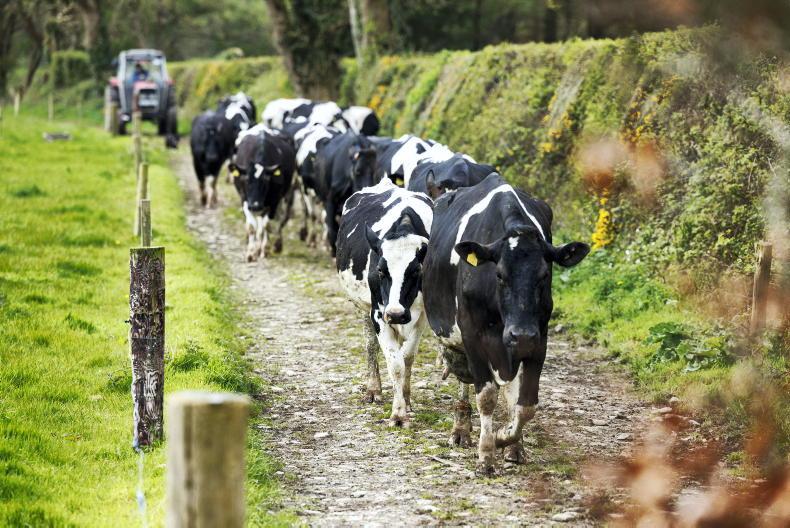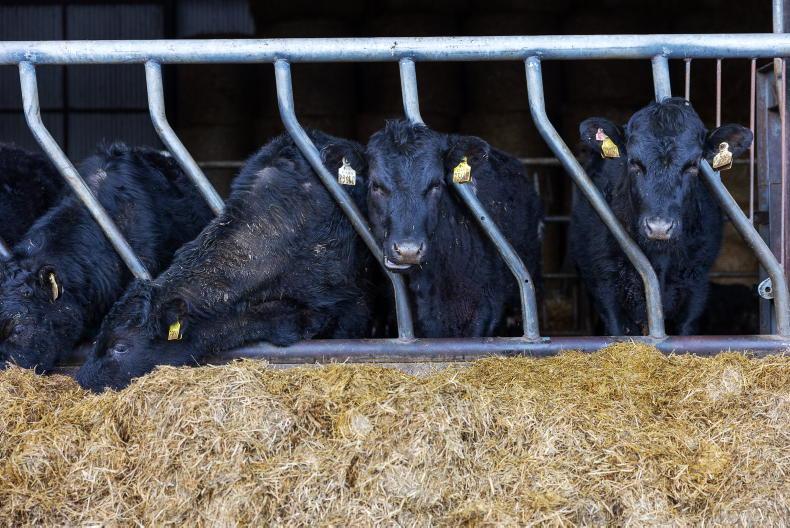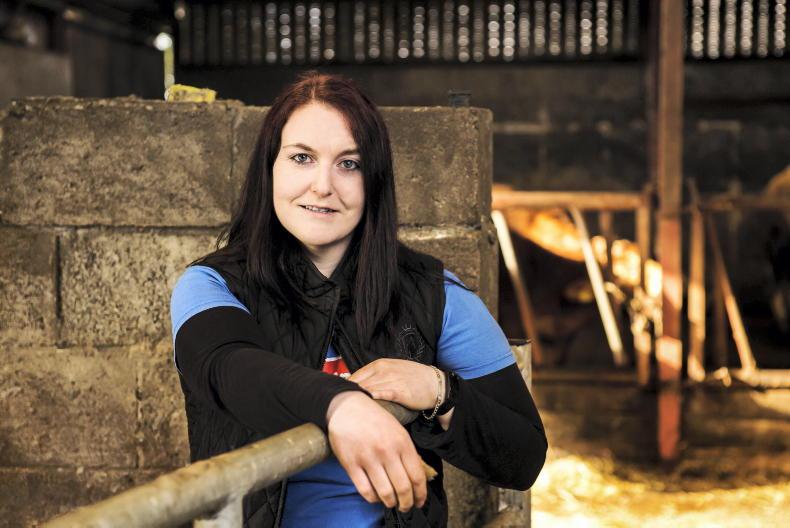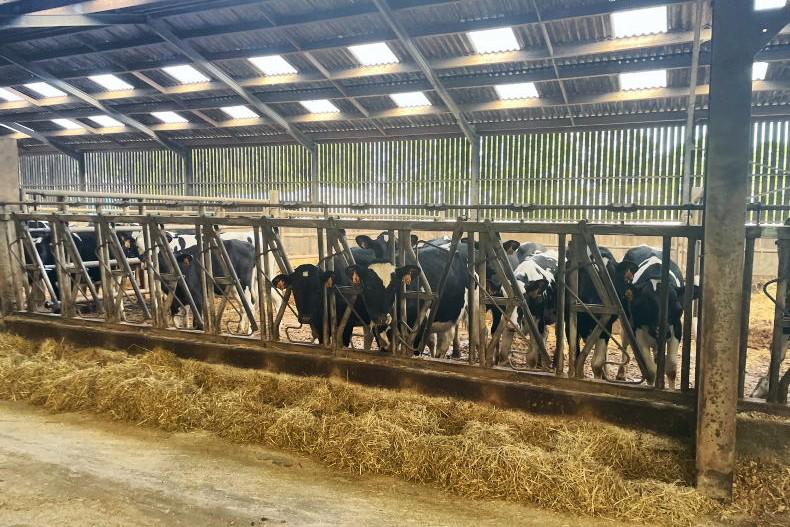Keeping the hand brake on grazing for the next week to 10 days could set you up nicely for the second round. Accelerating your grazing now could be detrimental and leave you chasing your tail for the next three to four weeks.
According to PastureBase data, many farms are currently below the average farm cover (AFC) target. Over the next few weeks, it’s essential to walk the farm weekly to assess grass supply, ensuring AFC stays above 600kg DM/ha.
Checking regrowth on paddocks grazed early in the first rotation will determine the ideal start for the second round. To begin the second rotation between 7-10 April, the first four to five grazed paddocks must have a cover of at least 800kg DM/ha. If covers are below this, the second rotation will need to be delayed.
With temperatures set to dip slightly in the coming days, growth rates are unlikely to improve significantly, making careful grass management even more critical.
Include sulphur in your next few fertiliser applications. It plays a key role in nitrogen fixation in legumes like clover and improves nitrogen efficiency at high application rates, boosting grass growth.
For grazing fields, aim to apply 20kg S/ha per year by July 1st. Products such as 18-6-12+S or Protected Urea + S would be best suited.
For silage fields, apply 15kg S/ha per cut (12 units/acre per cut). If spreading 3,000 gallons of cattle slurry per acre, balance sulphur levels by applying Protected Urea + S (38% N + 7% S).
Sward watch
Aim to get 60 units of nitrogen spread on every paddock by 1 April.Walk the farm to get an idea of the covers back on the paddocks that were first grazed. If below AFC target and the percentage grazed is high, slow down the rotation with additional concentrate, buffer-feeding silage at the barrier or housing cows at night. Micheal Gowen, Kilworth, Co Cork
We will slow down grazing for the next seven to 10 days. So far, 75% of the farm has been grazed, with the first paddock back at 900kg DM/ha and several others around 600kg DM/ha. The aim is to start the second round around 10 April. In the meantime, cows are being fed 8kg of grass, 8kg of silage (a mix of maize and red clover) and 2kg of concentrate in the parlour.
Stocking Rate (cow/ha):3.2
Growth Rate (kg/day) :16
Average Farm Cover (kg/ha) :626
Yield (l/cow) :24.5
Fat%:4.63
Protein% :3.38
Milk Solids (kg/cow):2.02
Concentrates :2
Aidan Kenny, Cloghan,
Co Offaly
We’re at 90% grazed, with just 10% left to calve. Cows are being buffered after both milkings with 4kg of silage.
Most paddocks have received 60 units of protected urea, while the remaining paddocks got 2,500 gallons/acre of slurry and 30 units of protected urea. The weanlings are grazing off the silage ground before it’s closed up for the first cut.
Stocking Rate (cow/ha): 2.4
Growth Rate (kg/ha):23
Average Farm Cover (kg/ha) :618
Yield (l/cow) : 27
Fat% :4.75
Protein% :3.58
Milk Solids (kg/cow):2.32
Concentrates : 5.5
Mike Bermingham, Knockananig, Fermoy, Co Cork
Calving wrapped last week. So far 30% of the farm is left to graze, mostly silage ground.
Many paddocks are sitting at 500kg DM/ha, and the goal is to build them up to 1,000kg DM/ha before starting the second rotation. Cows will graze a set percentage of the remaining ground by day, with the option to speed up if growth improves.
Stocking Rate (cow/ha):2.27
Growth Rate (kg/ha):21
Average Farm Cover (kg/ha): 625
Yield (l/cow) :28
Fat%: 5.32
Protein%:3.4
Milk Solids (kg/cow):2.51
Concentrates :7
Keeping the hand brake on grazing for the next week to 10 days could set you up nicely for the second round. Accelerating your grazing now could be detrimental and leave you chasing your tail for the next three to four weeks.
According to PastureBase data, many farms are currently below the average farm cover (AFC) target. Over the next few weeks, it’s essential to walk the farm weekly to assess grass supply, ensuring AFC stays above 600kg DM/ha.
Checking regrowth on paddocks grazed early in the first rotation will determine the ideal start for the second round. To begin the second rotation between 7-10 April, the first four to five grazed paddocks must have a cover of at least 800kg DM/ha. If covers are below this, the second rotation will need to be delayed.
With temperatures set to dip slightly in the coming days, growth rates are unlikely to improve significantly, making careful grass management even more critical.
Include sulphur in your next few fertiliser applications. It plays a key role in nitrogen fixation in legumes like clover and improves nitrogen efficiency at high application rates, boosting grass growth.
For grazing fields, aim to apply 20kg S/ha per year by July 1st. Products such as 18-6-12+S or Protected Urea + S would be best suited.
For silage fields, apply 15kg S/ha per cut (12 units/acre per cut). If spreading 3,000 gallons of cattle slurry per acre, balance sulphur levels by applying Protected Urea + S (38% N + 7% S).
Sward watch
Aim to get 60 units of nitrogen spread on every paddock by 1 April.Walk the farm to get an idea of the covers back on the paddocks that were first grazed. If below AFC target and the percentage grazed is high, slow down the rotation with additional concentrate, buffer-feeding silage at the barrier or housing cows at night. Micheal Gowen, Kilworth, Co Cork
We will slow down grazing for the next seven to 10 days. So far, 75% of the farm has been grazed, with the first paddock back at 900kg DM/ha and several others around 600kg DM/ha. The aim is to start the second round around 10 April. In the meantime, cows are being fed 8kg of grass, 8kg of silage (a mix of maize and red clover) and 2kg of concentrate in the parlour.
Stocking Rate (cow/ha):3.2
Growth Rate (kg/day) :16
Average Farm Cover (kg/ha) :626
Yield (l/cow) :24.5
Fat%:4.63
Protein% :3.38
Milk Solids (kg/cow):2.02
Concentrates :2
Aidan Kenny, Cloghan,
Co Offaly
We’re at 90% grazed, with just 10% left to calve. Cows are being buffered after both milkings with 4kg of silage.
Most paddocks have received 60 units of protected urea, while the remaining paddocks got 2,500 gallons/acre of slurry and 30 units of protected urea. The weanlings are grazing off the silage ground before it’s closed up for the first cut.
Stocking Rate (cow/ha): 2.4
Growth Rate (kg/ha):23
Average Farm Cover (kg/ha) :618
Yield (l/cow) : 27
Fat% :4.75
Protein% :3.58
Milk Solids (kg/cow):2.32
Concentrates : 5.5
Mike Bermingham, Knockananig, Fermoy, Co Cork
Calving wrapped last week. So far 30% of the farm is left to graze, mostly silage ground.
Many paddocks are sitting at 500kg DM/ha, and the goal is to build them up to 1,000kg DM/ha before starting the second rotation. Cows will graze a set percentage of the remaining ground by day, with the option to speed up if growth improves.
Stocking Rate (cow/ha):2.27
Growth Rate (kg/ha):21
Average Farm Cover (kg/ha): 625
Yield (l/cow) :28
Fat%: 5.32
Protein%:3.4
Milk Solids (kg/cow):2.51
Concentrates :7










SHARING OPTIONS